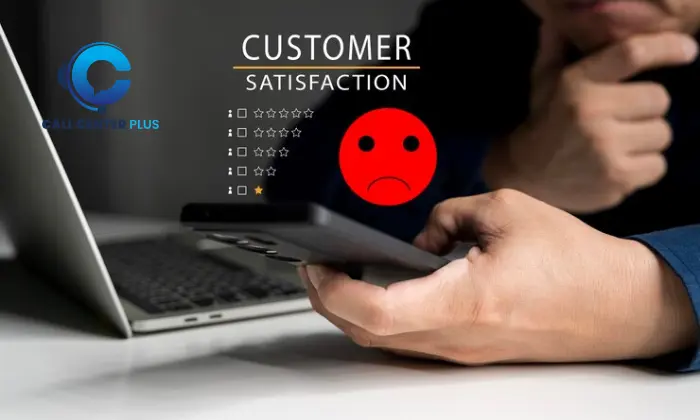The term customer attrition, which is the opposite of customer retention, refers to the gradual loss of customers over a specific period. It indicates the percentage of customers who stop using your services or purchasing your products. Often referred to as customer churn, this concept is a significant challenge for businesses aiming for growth.
High customer attrition directly affects profitability, making it essential to identify its causes and implement strategies to retain your customers. Understanding this phenomenon can help businesses reduce churn and improve overall performance.
If you are new to Call Centre Plus and want to explore customer retention automation platform than visit the link.
Exploring the Relationship Between Customer Retention and Attrition to Build Sustainable Business Strategies
Customer retention focuses on creating strong, lasting relationships, while customer attrition highlights the loss of those relationships. To maintain a competitive edge, businesses must find the right balance between the two by leveraging customer feedback, analyzing trends, and addressing concerns proactively.
Comparing customer attrition vs churn reveals that while both indicate loss, churn is often used for subscription-based models. By managing these aspects effectively, businesses can reduce churn, enhance customer satisfaction, and improve the customer retention rate formula outcomes.
If you want to build trust with customers, our customer retention department at call centre plus can help you out.
Is Churn the Inverse of Retention? The Answer and Its Implications for Business Growth

Yes, churn is considered the inverse of retention. While customer retention focuses on keeping existing customers, churn measures the percentage of customers lost during the same period. For example, if your retention rate is 85%, your churn rate is 15%.
This correlation underscores the importance of reducing churn to improve retention. Businesses should monitor both metrics simultaneously to get a holistic view of customer satisfaction and loyalty. Identifying high churn rates early allows for timely interventions, such as personalized marketing strategies or better customer support.
Customer Attrition Rate: A Critical Metric to Track and Reduce for Business Success
The customer attrition rate is a vital indicator of how effectively a business retains its customers. The formula is simple:
(Number of customers lost during a period ÷ Total customers at the start of the period) × 100
For example, if a business starts with 500 customers and loses 50, its attrition rate is:
(50 ÷ 500) × 100 = 10%
High attrition rates can hurt revenue and brand reputation. Companies need to identify common reasons behind attrition, such as poor service, product issues, or lack of engagement, and take proactive measures like loyalty programs or improved customer support to lower the rate.
What’s the Difference Between Retention and Acquisition, and How Does It Impact Business Strategies?
Retention and acquisition are two sides of the customer lifecycle. Retention focuses on keeping existing customers loyal, whereas acquisition involves attracting new customers. While acquisition may seem more exciting, retention is often more cost-effective, as retaining a customer costs significantly less than acquiring a new one.
High retention rates lead to better customer lifetime value (CLV) and stable revenue streams. Balancing these strategies ensures steady growth while maintaining a loyal customer base. Businesses must prioritize retention while using acquisition to expand their reach.
Strategies to Prevent Customer Attrition and Enhance Retention Rates
Reducing customer attrition and boosting retention requires targeted strategies. Here are some effective methods:
- Personalized Communication: Tailor your emails, offers, and support to individual customer needs. Personalization increases engagement and satisfaction.
- Proactive Customer Support: Address issues before they escalate by monitoring customer feedback and acting swiftly.
- Loyalty Programs: Reward customers for repeat purchases with discounts, exclusive offers, or points.
- Regular Engagement: Use social media, newsletters, and surveys to keep customers engaged and valued.
- Quality Improvements: Continuously enhance your products or services to meet evolving customer expectations.
How to Calculate Retention Rate From Churn Rate for Better Business Insights?
To calculate the retention rate from churn rate, use this simple formula:
Retention Rate = 100% – Churn Rate
For instance, if the churn rate is 20%, the retention rate is:
100% – 20% = 80%
This approach highlights the inverse relationship between these metrics and emphasizes the importance of monitoring both to understand customer behavior comprehensively.
Conclusion
The opposite of customer retention, customer attrition, represents a critical challenge for businesses. By understanding the customer retention rate formula, managing churn, and implementing strategies to reduce attrition, businesses can improve loyalty and sustain growth. Prioritizing both retention and acquisition ensures long-term success in a competitive market.
FAQs
How to calculate retention rate from churn rate?
To calculate retention rate, subtract the churn rate from 100%. For example, a 20% churn rate equals an 80% retention rate.
What is the opposite of customer retention in business?
The opposite of customer retention is customer attrition, which measures the percentage of customers lost over time.
What’s the difference between retention and acquisition?
Retention focuses on keeping existing customers loyal, while acquisition involves attracting new customers to grow your base.
How does churn impact business growth?
High churn rates lead to decreased revenue and brand loyalty, making it essential to reduce churn through effective customer engagement.
Can customer attrition be prevented?
Yes, businesses can reduce attrition by improving customer service, personalizing communication, and offering loyalty rewards.